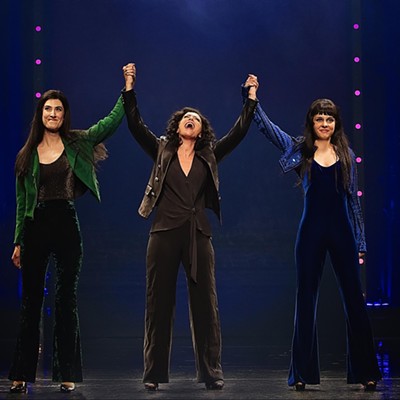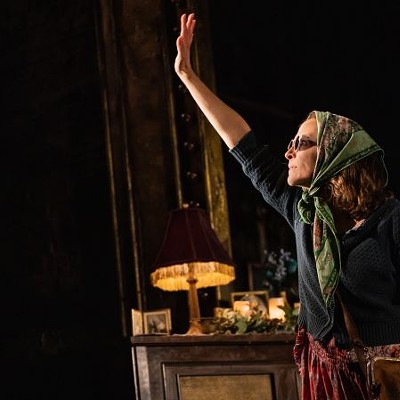Just outside the 610 Loop on the southwest side of town lies the Gulfton area, Houston's most densely populated neighborhood. The community has changed dramatically over its history, originally being a rural area belonging to Westmoreland Farms before the 1950s. During that decade, the Shenandoah subdivision was constructed southeast of what is now Highway 59, and just outside of the present day 610 Loop. The neighborhood of postwar ranch style homes took up sixteen blocks, next to land that would soon be developed differently.
In the 1960s, apartment complexes began to spring up in the area adjacent to Shenandoah, and that development trend increased a great deal during the next decade, as the 1970s saw Houston's economy prospering under the huge oil boom of the time. Huge numbers of young, mostly white workers from other parts of the United States began to flock to Houston for job opportunities, and so did many others from countries all over the world.
Gulfton-area apartment complexes were constructed as quickly as possible to accommodate the influx of those new, mostly younger and single Houstonians. They were, for the most part, not well planned for long term sustainability or integration into a functional community, but instead were designed and marketed to appeal to the whims of those younger residents. So, instead of building a community of well built apartments with nearby neighborhood features catering to residents planning on living there for many years, developers created a sort of tacky paradise for young people riding an energy industry boom. So shortsighted was their plan, developers didn't even bother to build sidewalks in most of the area, perhaps never foreseeing a scenario where anyone living in one of their apartments might need or want to walk anywhere else in the neighborhood.
Those "Luxury" apartment complexes were massive in some cases, with one famously advertising 17 swimming pools and 17 hot tubs, and were promoted as sexy places to live a party lifestyle. They had cheesy "faux classy" sounding names like Villa Royale, Napoleon Square, and Chateaux Carmel, that sounded like someone took a French word and then smushed it together with something incongruous, but they were appealing to many young renters in Houston's swinging, oil boom '70s. At least one even had an onsite disco.
Looking back on the golden age of Gulfton apartment living is like watching a Saturday Night Live skit. One merely has to watch one of the infamous commercials featuring the oily suave styling of Michael Pollock hawking his Colonial House Apartments to get a taste of just how weird that time must have been. Equal parts Chuck Norris wannabe and creepy guy that's too old to hang out at a nightclub catering to 20 year olds (but who goes anyway), Pollock was all over local television trying to sell an apartment living lifestyle straight out of "Boogie Nights."
And it worked, for a time. Gulfton was a happening, hip area of Houston for young people with wads of boomtown cash to spend. But nothing lasts forever, and when the oil economy crashed in the 1980s, Gulfton's swinging days quickly crashed and burned. The young singles who'd been the area's lifeblood quickly moved away, back to the places they'd come from, leaving a massive number of vacancies in the sprawling apartment complexes that dominated the neighborhood. Facing the scary realization that the boom was over, landlords were quick to cut the price of rent in an attempt to attract new residents to their now aging complexes, many of which had not been constructed well, and were now showing signs of neglect.
From the early '80s and for the following 20 years, Gulfton attracted enormous numbers of low income residents, mostly immigrants from Central American countries, and its population exploded. The area became the most densely populated neighborhood in Texas, filling with residents from 83 different countries, but lacking the types of public resources that help to foster a healthy working community. Gangs moved into the area and the crime rate increased, leading many Houstonians to refer to the formally popular part of town as the "Gulfton Ghetto."
During the early '90s, Gulfton's old neighbor, the Shenandoah subdivision, lobbied the city to help protect them from what some residents of the subdivision perceived as an increase in crime caused by the sudden demographic change in Gulfton. In 1992, Mayor Lanier included Gulfton as one of ten neighborhoods slated for a revitalization program. One part of that plan was to erect barricades around Shenandoah to reduce crime and traffic, and while supported by the Shenandoah Civic Asssociation, the Gulfton Area Neighborhood Organization opposed the separation and claimed that racist motives were behind it. In the end the two groups worked out their differences and the barricades were built.
However, like many areas of Houston that have seen bad times, there are glimmers of hope that the Gulfton area might someday see better times. In 2010, the Baker-Ripley Neighborhood Center was created nearby, and the center provides many services such as a gymnasium, a community garden, an elementary school, and a tax center. These are the types of services that the neighborhood always lacked, and has needed for years.
There have also been educational improvements in the area schools, and Gulfton seems to be slowly heading toward becoming a more stable community. It also benefits from its geographic location. Being just outside the 610 Loop and near communities like Bellaire, there is always the possibility that Gulfton will transition into a more desirable neighborhood. Stranger things have happened, and the diverse cross section of immigrants living there today are already contributing some unique shops and restaurants to Houston's increasingly international culture.
Driving through the area today does not fill me with dread or the feeling that Gulfton is some permanently blighted neighborhood with no chance of improvement. Changes are happening, albeit slowly, but in a decade or two we might see Gulfton as a success story just like other areas of Houston that were formerly considered the "bad side of town."
Rather than looking at the irresponsible development of the area that is largely to blame for the enormous blocks of apartments that are in Gulfton today, we may see the area revived, fueled by the diversity of people's settled there, and by the neighborhoods proximity to Houston's central core.
One thing about H-Town that we should all remember is that it is constantly changing, and it's short sighted to count out any neighborhood forever.
Flashback:
The Changing Face of Houston - The Old Sixth Ward
The Changing Face of Houston - Riverside Terrace
The Changing Face of Houston - Glenbrook Valley
The Changing Face of Houston - Downtown
The Changing Face of Houston - Oak Forest
The Changing Face of Houston - Sharpstown
The Changing Face of Houston - Spring Branch





